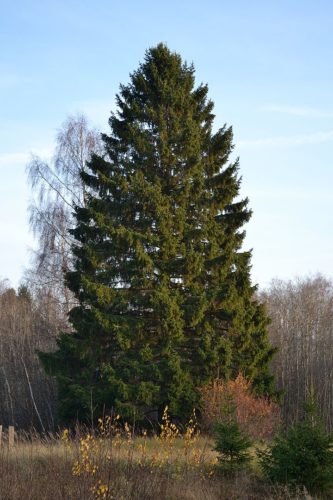Norway spruce, conifer of the pi
Also known as:
‘Christmas tree’
European spruce
You are viewing the mobile-adapted version of the page.
The one for tablets, laptop and desktop also provides general information, such as origin, toxicity and cultivation.
- Norway spruce needles are toxic to pets. In addition, the sharp points can puncture the intestinal wall. The water in the container of the Christmas
tree is also toxic. Do not place a food or water bowl near the Christmas tree because needles can get into the bowl. - Norway spruce needles are not toxic to humans.
Norway spruce – (Picea abies), a conifer of the pi
The Norway spruce as a Christmas
Christmas trees with root balls are best treated like a very large houseplant. Plant the tree in a large pot and keep the root ball moist with water enriched with liquid plant food.
If the intention is to plant the Christmas
Plant the tree in the garden when it is not freezing and let the tree get used to the outside temperature slowly first in an unheated garage or shed.
Bugs
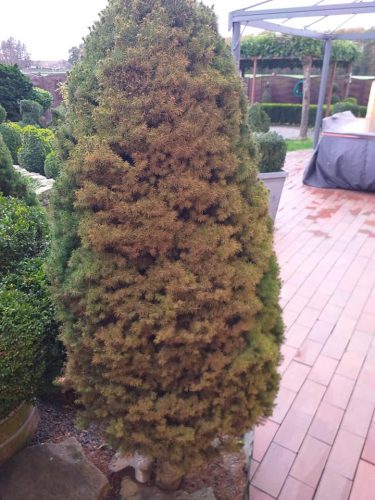
Spruce turns brown on shady sides, sometimes spider mites appear on the branches and minute black mites run across the branches: the Spruce spider mite (Oligonychus ununguis).
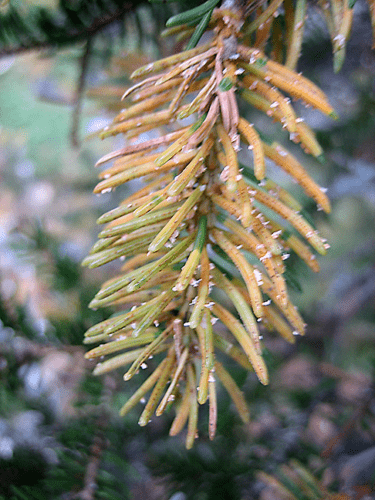
White fluff develops on and among the spruce needles; the needles yellow and fall off. Honeydew causes the needles to become sticky: Douglas Fir Adelgid (Gilletteella cooleyi).
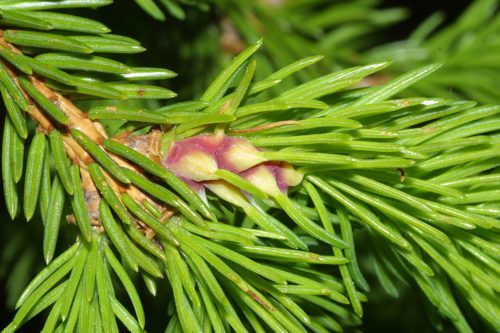
Galls form on the young shoots. These can grow to three cm in size. The young needles are stunted in their growth, lose their luster and fall off: Pineapple Gall Adelgid (Sacchiphantes abietis).
Spruce needles yellow, dry up, turn brown and fall off: Green spruce aphid (Elatobium abietinum).
Pine needles in the top of the tree are yellowing, star-shaped patterns can be seen behind the bark; no sawdust visible: Six toothed bark beetle (Pityogenes chalcographus).
Fungi & diseases
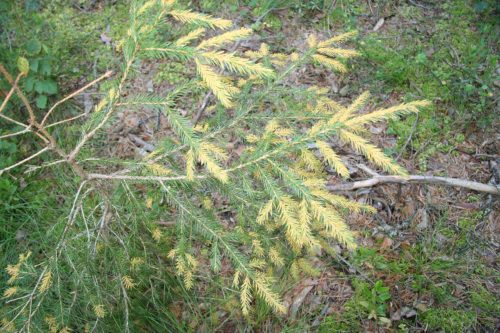
Shoots with young needles yellow: spruce needle rust (Chrysomyxa).
Other
Norway spruce lags in growth, tree shows slender, lean form: potassium deficiency.

Purple button-shaped mushrooms on the dead wood or stump of a felled Norway spruce: Jelly drops (Ascocoryne sarcoides).
Needles turn brown, twigs wither. If this occurs on the shady side of the plant, and it is a dwarf spruce, there is a good chance that the infestation is the work of the Spruce spider mite. Sunburn can also cause brown spots, as can dryness.
Bare, but still living twigs can re-sprout(backbudding, sprouting on old wood) but unfortunately this is rare.

